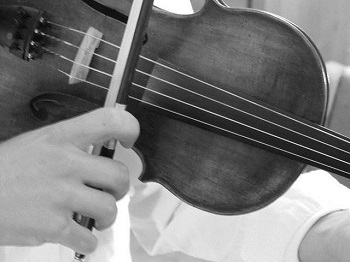A recent study revealed that using a smartphone creates similar responses as learning a musical instrument.
While learning how to send and receive texts on mobile technology such as a smartphone may not be as challenging to most people as learning to play a musical instrument, a recent study has revealed that these two practices could have quite a bit in common when it comes to the brain patterns that they produce.
Researchers have discovered that using a smartphone can impact the brain in a similar way to learning to play the violin.
The parts of the brain that guide finger movements are stimulated in the same way when using a smartphone with a touchscreen as they are when learning to play a musical instrument. Every part of the body is linked to a processing area within the brain that is known as the somatosensory cortex. That area in the brain is “plastic”, which means that they continue to change and develop throughout our entire lives. Therefore, when a person repeatedly practices playing the violin, the area that controls the fingers grows larger than it does in those who don’t play a musical instrument with their fingers.
Mobile technology use over touchscreens has now shown to produce growth of a similar nature.
 At the Institute of Neuroinformatics of the University of Zurich and ETH Zurich, researcher Arko Ghosh examined the impact of daily smartphone use on the plastic areas of the brain. Ghosh stated that “Smartphones offer us an opportunity to understand how normal life shapes the brains of ordinary people.”
At the Institute of Neuroinformatics of the University of Zurich and ETH Zurich, researcher Arko Ghosh examined the impact of daily smartphone use on the plastic areas of the brain. Ghosh stated that “Smartphones offer us an opportunity to understand how normal life shapes the brains of ordinary people.”
Ghosh’s team joined another team from the University of Fribourg. Together, they applied electroencephaolography (EEGs) to measure the brain activity within 37 people. Within that group, 26 people were touchscreen smartphone users. The remaining 9 people used cell phones with physical number keys.
While the jury is still out whether or not mobile technology such as smartphones are actually safe for overall health – with the body of conflicting evidence growing quite regularly – this study has suggested that in at least this one circumstance, the use of the devices with touchscreens can help to stimulate the brain and grow areas in a similar manner that is experienced by violin players. They determined that the growth was greatest in the specific part of the brain that is responsible for the control of the thumbs. The key difference between smartphone use and violin playing was that the growth occurred in the brain regardless of how long the user had been using the device. In the case of violin players, the growth depended on the age at which they began playing.

 The program is based on the use of mobile device technology. Affected families have been provided with e-vouchers that can be used as payments for the replacement of farming supplies. The system works by transferring funds directly to the smartphones of the farmers, which have a special chip enabled within them.
The program is based on the use of mobile device technology. Affected families have been provided with e-vouchers that can be used as payments for the replacement of farming supplies. The system works by transferring funds directly to the smartphones of the farmers, which have a special chip enabled within them.